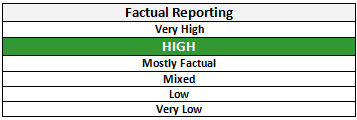In the latest episode of NHK WORLD-JAPAN’s “BEGIN Japanology,” host Peter Barakan explores the cultural significance and culinary artistry of soba noodles, a staple in Japanese cuisine. The program delves into the various styles of soba, the traditional techniques of crafting these buckwheat noodles, and their historical evolution from a humble street food to a beloved gourmet dish. The show also highlights how soba is deeply embedded in Japanese customs, such as the New Year’s ritual of eating Toshikoshi soba for good fortune. Furthermore, the episode examines the booming interest in homemade soba and the expertise required to become a soba master, known as a “sobaier.”
- Soba noodles are a popular and nutritious food in Japan with a firm yet smooth texture.
- The buckwheat grain, known as soba in Japanese, is used to make various types of soba noodles served in numerous styles.
- Eating soba noodles on New Year’s Eve, known as Toshikoshi soba, is considered auspicious and symbolic of a long, healthy life.
- Homemade soba-making classes are attracting many students, particularly middle-aged and older men.
- Soba connoisseurs, or “sobaier,” possess encyclopedic knowledge of soba and masterful noodle-making skills.
- Traditional methods of making soba involve grinding buckwheat, mixing it with water and other ingredients, kneading, and cutting the dough into strands.
- There are different styles of soba noodles, such as Nihachi soba, Sarashina soba, Inaka soba, and Dattan soba, each with distinctive tastes and textures.
- Soba can be enjoyed cold with a dipping sauce called tsuyu or hot in a soup, with a variety of toppings like tempura or duck meat.
- The show features the art of making sarashina kipon, a high-quality, translucent soba noodle cherished for its smoothness and firm texture.
- Slurping soba noodles is part of the traditional etiquette and enhances the aroma and flavor of the dish.
- After finishing the soba, the leftover tsuyu is diluted with soba cooking water, known as sobayu, and consumed for its nutritional benefits.
NHK WORLD-JAPAN is “the international service of Japan’s public media organization NHK.” NHK World-Japan is operated by Nippon Hoso Kyokai (NHK). The goal of NHK World-Japan is stated as “to promote a deeper international understanding of Japan, introducing the latest events in Japan through news and other programs.”
“Overall, we rate NHK World-Japan Left-Center biased based on story selection that slightly favors the left. We also rate them High for factual reporting due to a clean fact check record.”
https://mediabiasfactcheck.com/nhk-world/


Official website: https://www3.nhk.or.jp/nhkworld/
Original video here.
This summary has been generated by AI.
